People
Gallerist Mihai Nicodim on How He Escaped a Communist Dictatorship to Mint Art Stars in LA
The dealer who launched Adrian Ghenie has a fascinating backstory.
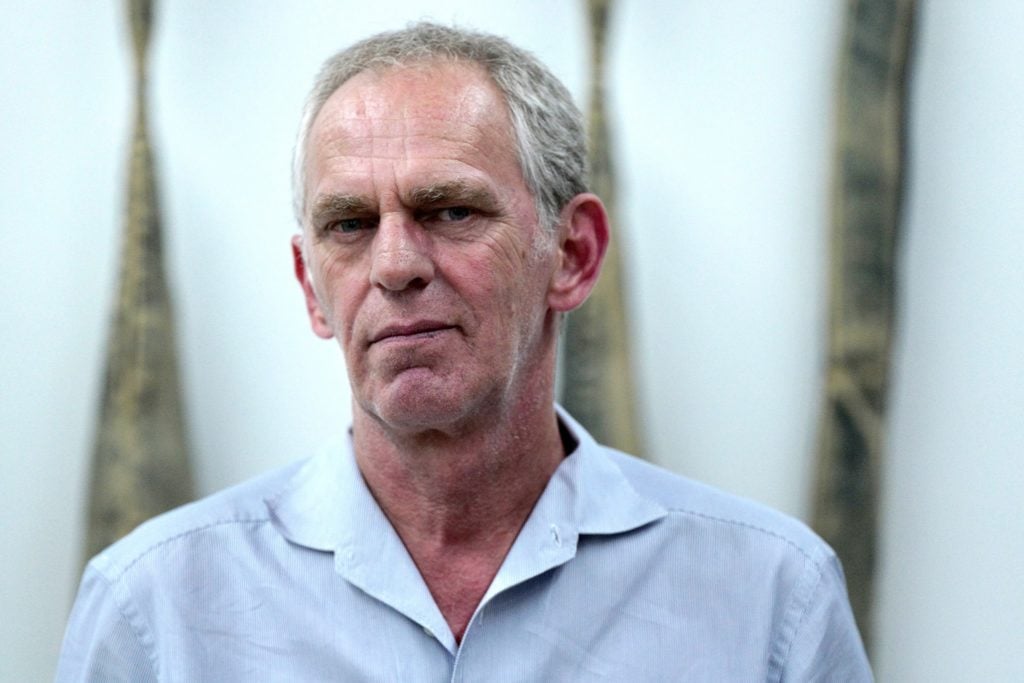
The dealer who launched Adrian Ghenie has a fascinating backstory.

Henri Neuendorf

Romanian dealer Mihai Nicodim arrived in Los Angeles as an immigrant, in the 1980s, shortly before the collapse of the eastern bloc.
Having escaped Nicolae Ceaușescu’s brutal communist dictatorship, Nicodim worked several different jobs as he acclimatized to life in America. He spent much of his time learning about the contemporary art that the state censorship machine had prevented him from seeing in his home country—and training his eye.
Nicodim opened his first gallery in LA’s Chinatown in 2006, then later settled in Boyle Heights. Over the last 12 years, the dealer forged a strong program from a core of talented artists from his native Romania and Eastern Europe, becoming an early proponent of the Cluj School (a label that Nicodim rejects), the loose collective of artists such as Adrian Ghenie, Razvan Boar, Ciprian Muresan, and Servan Savu that gained its name from the Transylvanian city where their art first took flight.
Whereas most dealers trawl for their artistic talent in established cultural hubs like New York, Los Angeles, London, or Berlin, Nicodim has over the years developed a reputation for extracting talented artists from small-batch art scenes outside of art world’s capital cities—and presenting their work in a way that strikes a chord with sophisticated audiences.
To learn more about the dealer’s fascinating life story, artnet News spoke to Nicodim about the arc of his gallery, and how you can pluck an artist from an out-of-the-way region and successfully market them abroad.
You have a remarkable background—not every LA gallerist grew up under communist rule. When did you first come into contact with art?
I was born in Romania, and then I emigrated here. I come from a background as an artist myself, and studied at a very conservative art school where they teach you how to draw Greek statues for two years before you are even allowed to touch oil paint.
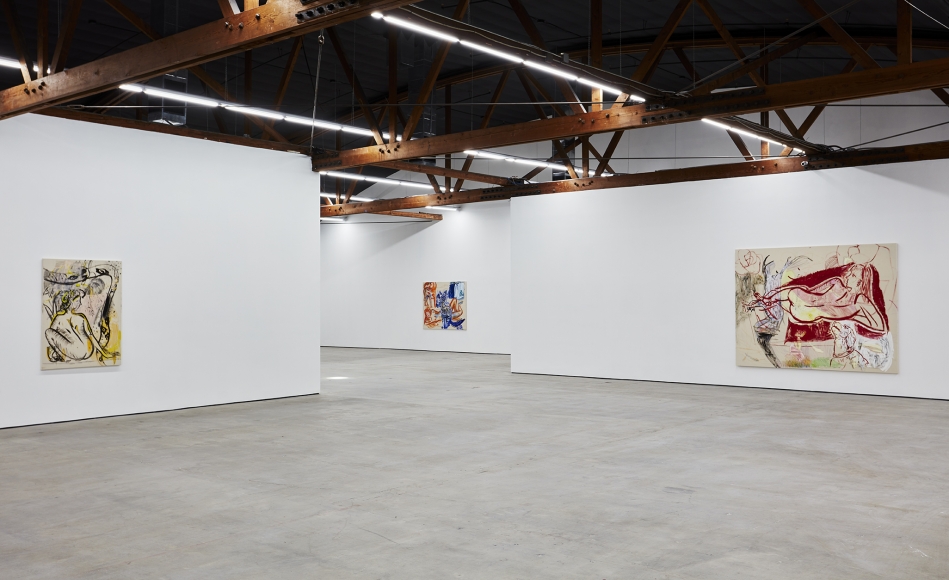
An installation view of Razvan Boar’s “EZ VALLEY.” Photo: Courtesy of Nicodim Gallery, Los Angeles.
How did your upbringing in Romania shape your understanding of art?
When I was a kid growing up and going to school, it was fun. I would watch my father get up at two o’clock in the morning to stand in line without realizing that he was going to try and get food for us. And then I grew up, I went to art school, and it was still fun.
The problems began a few years after finishing the academy, because that’s when you want to do something with your life. To get a studio, you have to be part of the artists’ union, because they give you money to buy art materials and subsidize a studio—and they did that for me. But at the art store I could only get white and blue, because cadmium colors were only for the senior members, so you would have to look for senior members of the union to get yellow or orange, for example—and, of course, I thought this was normal. But after a couple of years I realized it wasn’t normal at all, and I got tired of it.
Back then everyone wanted to leave—everyone wanted find a way to defect. I realized Romania was not an ideal situation for an artist. I wouldn’t go so far as to say that they would tell you what to paint, but the only way to have a good career was with the Union of Fine Arts, and to remain a member you’d have to paint workers and peasants with happy faces, and do political work the way they saw fit.
What did you do when you first immigrated to the US in the ’80s?
It was tough in the beginning. For example, I looked at the second Basquiat show in New York and all I could think was, “This guy doesn’t know how to draw.” I mean, you have to understand where I was coming from. Also, looking at Kippenberger, I thought, “This is a really bad painter,” without realizing that the guy actually wanted to paint like that. But instinctively I knew I was looking at something that I was completely incapable of understanding and relating to. Then I went through this culture shock, and I couldn’t touch a pencil for 10 years. For the next 10 to 15 years all I did was read, and look at things, and begin to understand things.
Meanwhile, you take all kinds of jobs, because coming from Romania, an Eastern European country where you have nothing, you want to have a lot of stuff. It’s America in the ’80s! You’re going to want your soft-top convertible, you’re gonna want your condo. I had fun in the ’80s. I did everything. It was fun.
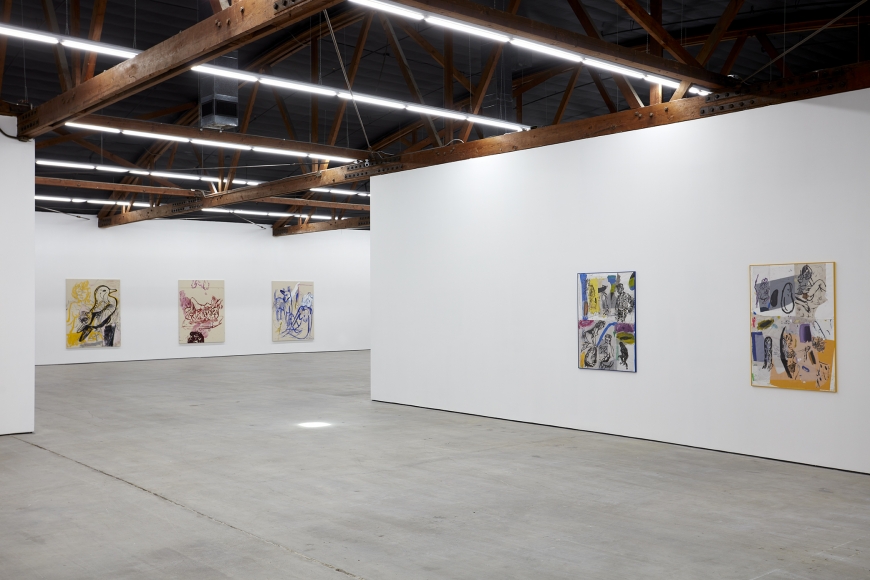
Another view of the show. Photo: Courtesy of Nicodim Gallery, Los Angeles.
What kind of jobs were you doing at the time?
I was working anywhere. Everything from selling cars to working as a lease manager. I was selling junk bonds for a number of years. I wouldn’t say it’s a good lesson, but it’s an experience that makes you very comfortable with the idea of the market. It was probably easier for me to understand the market than some other dealers who were opening galleries from a more idealistic point of view. I have a lot of friends who closed galleries because they told me they just couldn’t take the idea of selling the work, and I asked them why they even opened a gallery in the first place. Selling isn’t everything a gallery does, but it’s a very important aspect of what a gallery does to support the artists. The artists need a studio, materials, and the artists need to be able to concentrate fully on their art.
How did you come to open your gallery?
I opened 12 years ago and went back to my roots, showing Eastern European artists. Some of the first shows I did were with Ciprian Muresan, Adrian Ghenie, Serban Savu—art that I reacted to, by people that I knew.
But I was completely clueless about what a gallery does. If I knew at the time what this business was about and what is involved, I don’t think I would have had the balls to open in the first place. So ignorance was bliss.
In the beginning it was not easy, because having a gallery in Los Angeles and showing Eastern European art was tough. It was hard to see students from CalArts or UCLA who would walk in a show and walk right out. It was hard for them to communicate with the work, it was hard for them to appreciate the work. In the beginning it was very, very frustrating in LA. I felt like I was never able to belong to the community over here. But somehow collectors always reacted well to the work, so the gallery was able to grow.
I started in Chinatown in a very small space, smaller than the office I have now. And then I moved to Culver City for five years, because the artists were growing so I thought the gallery needed to grow. Then I moved downtown, where I just opened a 10,000-square-foot gallery. I’m happy to be downtown, and I just hired a new director.
I’m grateful that my artists grew, and I’m grateful that I was able to weather the hard times. It was a learning experience. Some of my artists didn’t know what they were doing and were in a strange place—and I didn’t know what I was doing and I was in a strange place. But It really worked, and I was always willing to take risks.
For example, when I did my first show in 2006 it was a group show with Adrian Ghenie and Ciprian Muresan—it was the first show for either of them in the states—and also Cyprien Gaillard. Nobody walked in, I had four people at the opening. And this year Ciprian [Muresan] was in the Venice Biennale, Adrien Ghenie has a very good career and is in major museums and institutions, and I opened a second gallery in Romania three years ago, so things are working out.
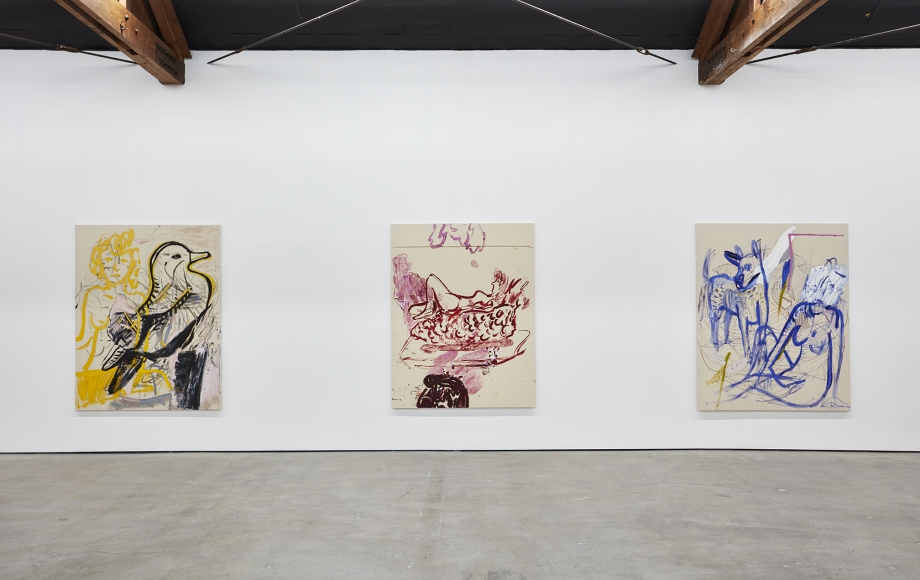
Mihai Nicodim’s space is in LA’s Boyle Heights. Photo: Courtesy of Nicodim Gallery, Los Angeles.
Why did you decide to open a second space in Bucharest three years ago?
I remember how clueless I was when I left Romania, and now you have these kids who are finishing art school and looking at art online—at least they have access to the internet now—and they’re looking at so much information and art, but they never see anything. It’s important for me to take a guy like Philipp Kreme to Bucharest to do a talk about [Georg] Baselitz, or be able to take Oscar Murillo to visit studios there so they could realize that he’s not just an ‘art star’ that you see in magazines—he’s actually a really nice guy, and he’s just like you or me. Most of the gallery’s audience are students, and I think it’s opening some eyes. Some of them get it and some of them don’t, but you can see that it awakens some kind of curiosity in them, and that’s all I can hope for. I love that the most, actually. It gives me a lot of satisfaction to have that place there.
What do you look for in an artist?
I know the work is strong if, for whatever reason, I react to it. Sometime I see work that I don’t necessarily understand or I don’t like, but I know it’s strong. It’s almost like I have to show it—I think, “I cannot deny this artist the right to show this, and maybe my understanding will come later.” If I’m able to understand that much, I don’t have to like it. I don’t have to fully appreciate the work.
What’s the secret to successfully taking an artist from a small, insular art scene like Romania to a much larger market?
The key to success is to really, really know what you stand for and to stick with it. In my case I was able to stick with it even though it was not easy. For instance, I was never seen as having a hip gallery, and most of the artists were never hip, and I was never hip. But I realized that was a good thing, because by definition you can only be hip for six months, or maybe two years. So I’ve always been really, really serious, and believed in my artists, and stuck with them.
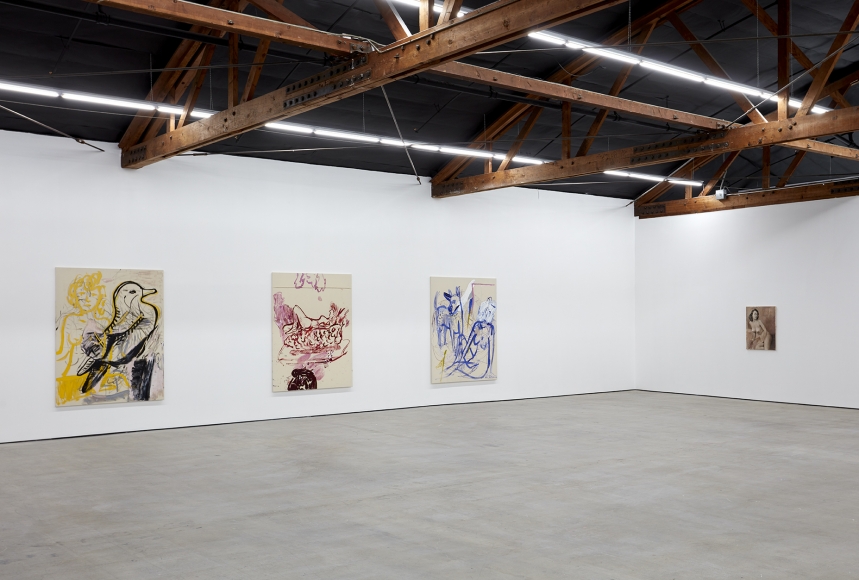
Another view of Razvan Boar’s show. Photo: Courtesy of Nicodim Gallery, Los Angeles.
How have you succeeded so well in introducing this kind of challenging art to an American audience?
It was hard in the beginning. A lot of people think this happened overnight, that’s not true. I’ve worked with these artists for more than 20 years now. They didn’t get the attention they deserved in the beginning.
Take, for example, Ciprian Muresan. The first time I showed him in 2007 I only had a handful of people at the opening, but one of them was Alma Ruiz, who was chief curator of MOCA, and she actually knew the work and bought the whole show for $8,000. Not one work for $8,000, but the whole show. So in Ciprian’s case the institutions reacted very early on, but he never really had a market until two, three years ago. He’s such an intelligent artist, such a good artist.
With Adrian Ghenie, collectors liked his work from the very beginning and always supported him. But the institutions never did, until the Hammer Museum in LA became the first museum that bought his work in 2008, and that’s because [former Hammer curator] Ali Subotnick was really interested in Ciprian Muresan and was following my program closely, and realized that Adrian is a good painter. It may not be what’s being done at CalArts or UCLA, but she recognized that it’s still interesting.
What advice would you give to dealers who are looking to follow a similar path and bring the spotlight to a small region’s art scene?
Be sincere. You should show something that you react to. For instance, if you’re an American and you take an artist from Latvia or whatever and show him in LA, I don’t think you will be successful because it’s not your language or culture. So you should stick to what you know, then work on communicating your program.
I’ve had the gallery in LA for a dozen years and people still see me as a foreign gallery with an outpost in LA, which is quite strange because I’ve actually been here for 35 years. I could never fit in because of my program, but it’s what I knew best, and it was very satisfying for me when people began to get interested in my program.
So that’s my advice for any dealer. Stick to what you know and do your best to communicate what you know and where you’re coming from, and never forget your roots.